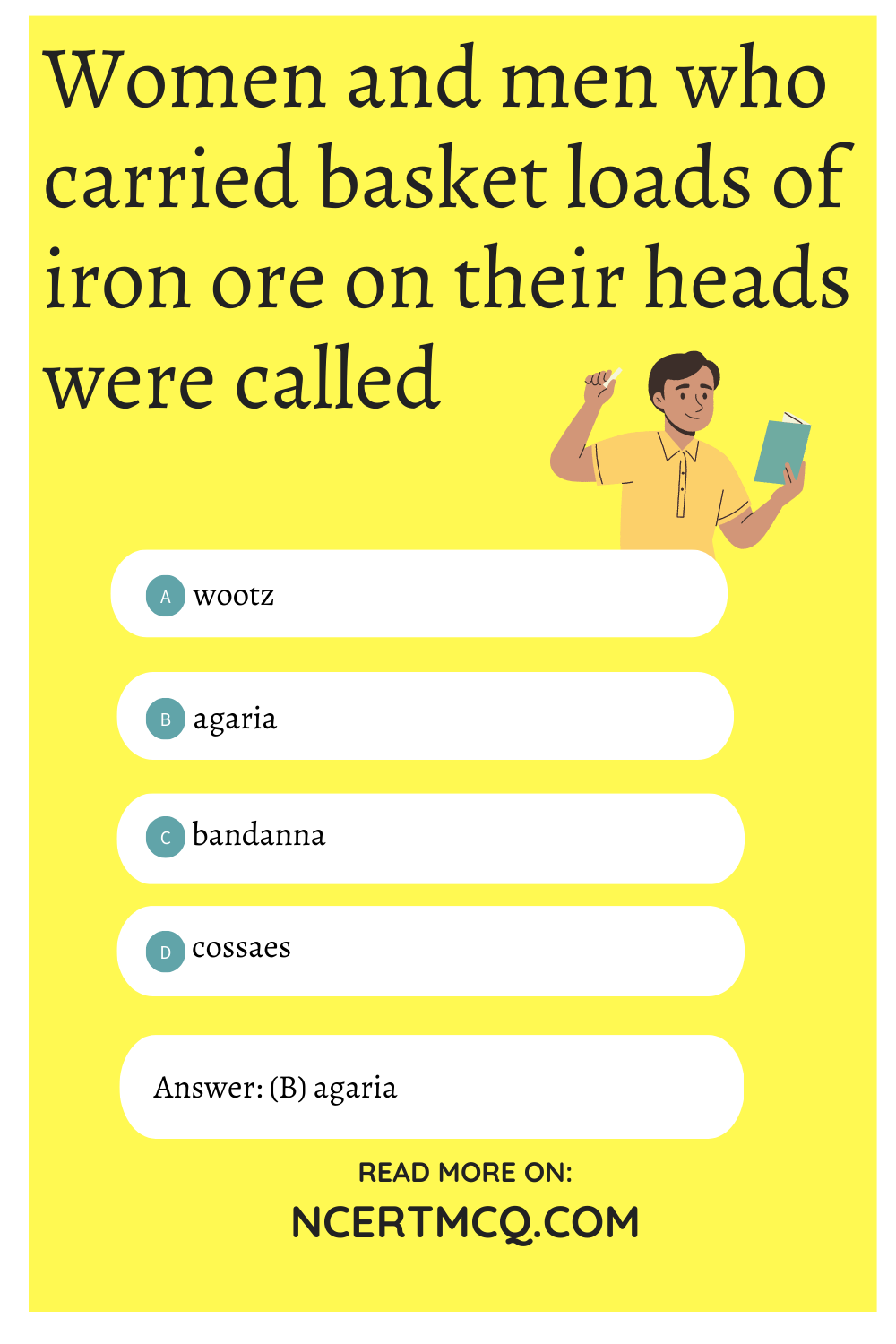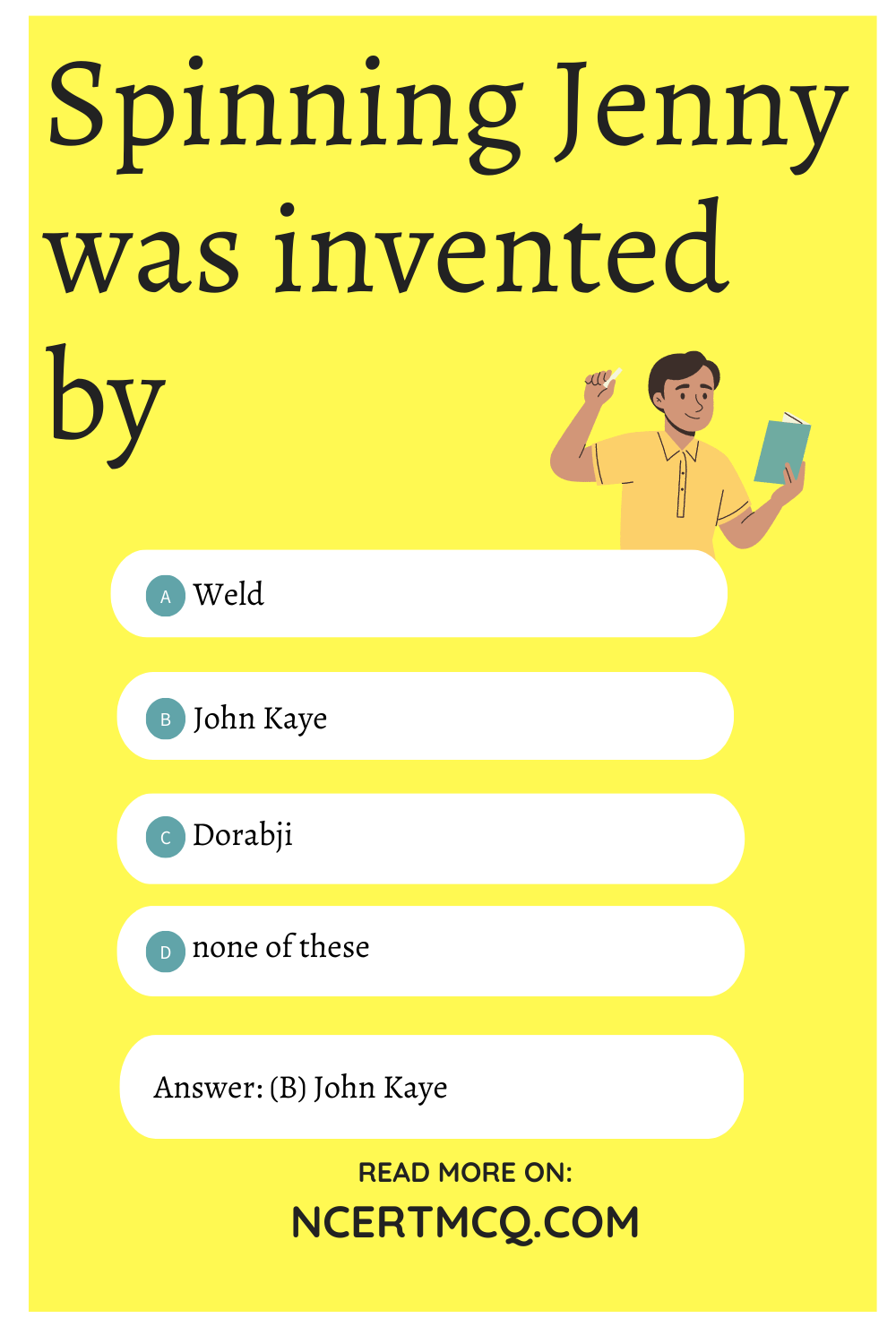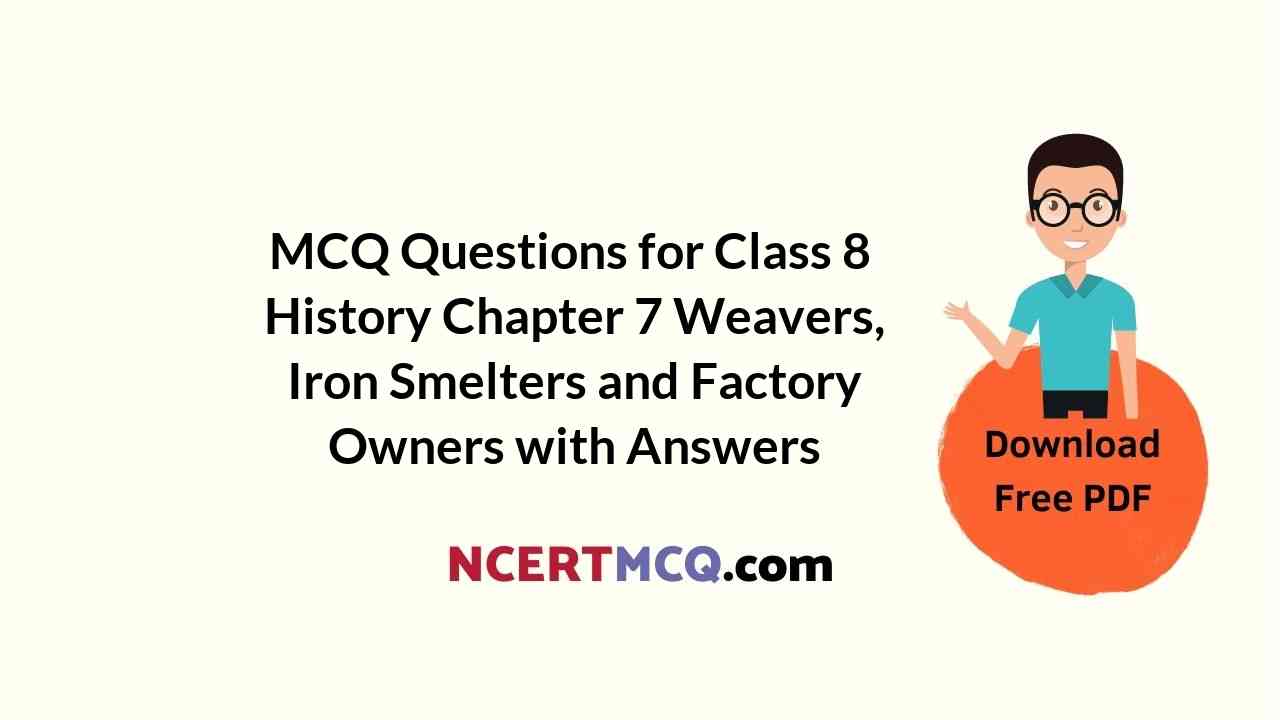Check the below NCERT MCQ Questions for Class 8 History Chapter 7 Weavers, Iron Smelters and Factory Owners with Answers Pdf free download. MCQ Questions for Class 8 Social Science with Answers were prepared based on the latest exam pattern. We have Provided Weavers, Iron Smelters and Factory Owners Class 8 History MCQs Questions with Answers to help students understand the concept very well. https://ncertmcq.com/mcq-questions-for-class-8-social-science-with-answers/
Class 8 Social Science History Chapter 7 MCQ With Answers
History Class 8 Chapter 7 MCQs On Weavers, Iron Smelters and Factory Owners
Choose the correct answer:
Weavers Iron Smelters And Factory Owners MCQ Question 1.
……………. cloth had a large market in Europe.
(a) Chintz
(b) Patola
(c) Jamdani
(d) None of these
Answer
Answer: (a) Chintz
Class 8 History Chapter 7 MCQ Question 2.
Women and men who carried basket loads of iron ore on their heads were called
(a) wootz
(b) agaria
(c) bandanna
(d) cossaes
Answer
Answer: (b) agaria

Class 8 History Chapter 6 Weavers Iron Smelters And Factory Owners MCQ Question 3.
In which century did the India’s textile industry decline?
(a) 17th century
(b) 18th century
(c) 19th century
(d) 20th century
Answer
Answer: (c) 19th century
Weavers, Iron Smelters And Factory Owners Class 8 MCQ With Answers Question 4.
TISCO expanded steel production during the
(a) First World War
(b) Second World War
(c) Third World War
(d) None of these
Answer
Answer: (a) First World War
Class 8 History Ch 7 MCQ Question 5.
Portuguese first came to India in search of
(a) cotton
(b) spices
(c) steel
(d) muslin
Answer
Answer: (b) spices
Weavers Iron Smelters And Factory Owners Class 8 MCQ Question 6.
What things did Portuguese take back to Europe?
(a) Steel
(b) Sugar
(c) Cotton textile
(d) Coffee
Answer
Answer: (c) Cotton textile
MCQ Questions For Class 8 History Chapter 7 Question 7.
Tipu Sultan’s sword was made of
(a) stainless steel
(b) wootz
(c) silver
(d) none of these
Answer
Answer: (b) wootz
Class 8 History Chapter Weavers Iron Smelters And Factory Owners MCQ Question 8.
Which of the following was NOT the name of Indian textile ?
(a) Chintz
(b) Cossaes
(c) Calico
(d) Agaria
Answer
Answer: (d) Agaria
Class 8 History Chapter 6 Weavers, Iron Smelters And Factory Owners MCQ Question 9.
Michael Faraday spent four years in studying
(a) the property of Indian steel
(b) the ancient Indian culture
(c) the properties of Indian Wootz
(d) none of these
Answer
Answer: (c) the properties of Indian Wootz
Class 8 History Chapter 7 Extra Questions And Answers MCQ Question 10.
Which place in India had one of the finest ores in the world?
(a) Raniganj
(b) Jharia
(c) Rajhara Hills
(d) None of these
Answer
Answer: (c) Rajhara Hills
MCQ For Class 8 History Chapter 7 With Answers Question 11.
Spinning Jenny was invented by
(a) Weld
(b) John Kaye
(c) Dorabji
(d) none of these
Answer
Answer: (b) John Kaye

Match the following:
| Column A | Column B |
| (i) Spinning Jenny | (a) A device that can pump air |
| (ii) Aurang | (b) The dump of wastes which is left after smelting metals |
| (iii) Smelting | (c) A process of obtaining a metal from iron ore |
| (iv) Bellows | (d) A fine muslin on which decorative motifs are woven |
| (v) Slag,Heaps | (e) A persian word meaning a warehouse |
| (vi) Jamkani | (f) A machine by which a single worker can handle several spindles for spinning thread |
Answer
Answer:
| Column A | Column B |
| (i) Spinning Jenny | (f) A machine by which a single worker can handle several spindles for spinning thread |
| (ii) Aurang | (e) A persian word meaning a warehouse |
| (iii) Smelting | (c) A process of obtaining a metal from iron ore |
| (iv) Bellows | (a) A device that can pump air |
| (v) Slag,Heaps | (b) The dump of wastes which is left after smelting metals |
| (vi) Jamkani | (d) A fine muslin on which decorative motifs are woven |
State whether true or false:
1. The Wootz steel making process was widely known in north India.
Answer
Answer: False
2. The importance of Surat declined in the eighteenth century.
Answer
Answer: True
3. Charkha was put at the centre of the tricolour flag of the Indian National Congress adopted in 1931.
Answer
Answer: True
4. Tipu Sultan fought seven wars with British.
Answer
Answer: False
5. Tipu Sultan ruled Mysore till 1812.
Answer
Answer: False
6. During British rule Sugar industry was focussed.
Answer
Answer: False
Fill in the blanks:
1. In the mid-nineteenth century Patola was highly valued in ………………….
Answer
Answer: Indonesia
2. …………………. became the biggest steel industry within the British rule.
Answer
Answer: TISCO
3. The first cotton mill in India was set up in ………………….
Answer
Answer: 1854
4. …………………. slowly became a symbol of nationalism.
Answer
Answer: Khadi
5. Michael Faraday was the discoverer of …………………. and ………………….
Answer
Answer: electricity,electromagnetism.
We hope the given NCERT MCQ Questions for Class 8 History Chapter 7 Weavers, Iron Smelters and Factory Owners with Answers Pdf free download will help you. If you have any queries regarding Weavers, Iron Smelters and Factory Owners CBSE Class 8 History MCQs Multiple Choice Questions with Answers, drop a comment below and we will get back to you soon.
Class 8 Social Science History MCQ:
- How, When and Where Class 8 MCQ
- From Trade to Territory Class 8 MCQ
- Ruling the Countryside Class 8 MCQ
- Tribals, Dikus and the Vision of a Golden Age Class 8 MCQ
- When People Rebel 1857 and After Class 8 MCQ
- Colonialism and the City Class 8 MCQ
- Weavers, Iron Smelters and Factory Owners Class 8 MCQ
- Civilising the Native, Educating the Nation Class 8 MCQ
- Women, Caste and Reform Class 8 MCQ
- The Changing World of Visual Arts Class 8 MCQ
- The Making of the National Movement 1870s-1947 Class 8 MCQ
- India After Independence Class 8 MCQ
